Traveling to a random and unknown place without planning or researching in advance can sometimes lead to profoundly rewarding and spontaneous adventures. Malta is not one of those destinations.
Our whimsical decision to visit this Mediterranean island brought misery raining down upon us from the moment we arrived. While we eventually salvaged our trip to this surreal country, our misadventure best serves as a cautionary tale on how not to discover Malta.
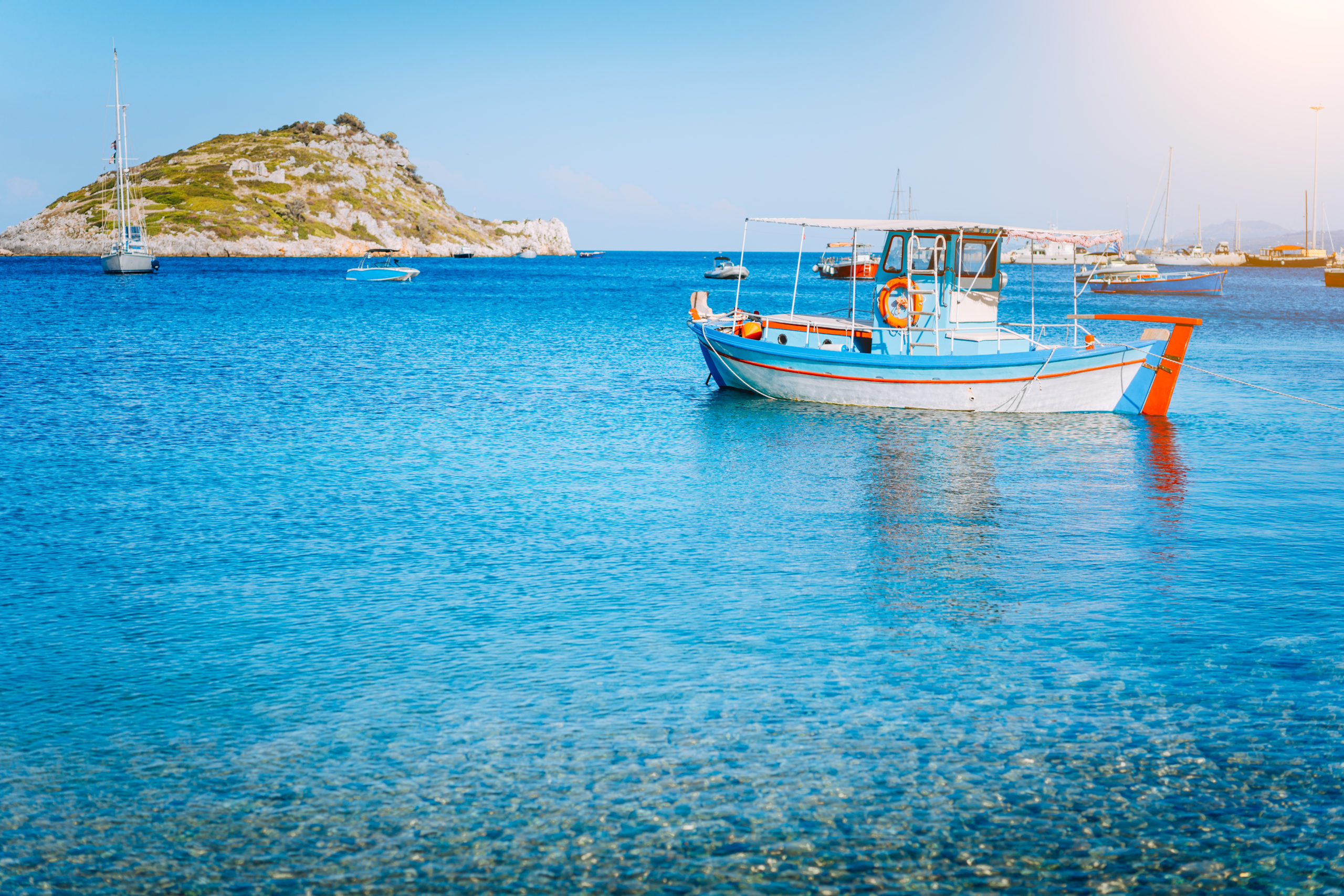
The Malta trip originated, appropriately enough, with some spam in September. I received an email from Ryan Air, one of Europe’s discount airlines, offering weekend round trip tickets to Malta from our home in Toulouse, France, plus a three-day car rental for just $112. With only a cursory discussion between me and my wife, I booked the tickets for mid-November, figuring we deserved an adult escape away from our teenage kids.
Rather than carefully researching Malta, I decided it would be fun to improvise. The trip itself was such a random idea, why not let fate take us where it would?
Here’s what I knew about Malta before we left: It had become Europe’s gambling haven thanks to sketchy tax rules. A questionable program that sells passports had made it a haven for Russia’s elite. Those two things have intersected to make Malta a popular destination for online gambling companies. Oh, and just a few weeks before our trip, a Maltese journalist investigating financial corruption was killed by a car bomb.
Despite this pirate reputation, I chose to ignore plenty of other signs of trouble before we left. I mentioned offhandedly to some French friends that we were going to Malta, having snagged cheap airline tickets and a rental car. One of them gave me a quizzical look and said, “Rented a car? On Malta? You know, I hired a driver for just $20 a day. Maybe you should hire a driver. You don’t want to drive on Malta.”
Hire a driver? Please. We are not the kind of people whose income bracket places them in the ranks of those who hire drivers for their vacation. Plus, the idea of having a person tagging along with us all weekend, tapping their foot impatiently as we went for walks or stopped to eat, seemed wholly unappealing. I didn’t want to spend the long weekend managing an employee as we explored the lush landscapes of a bucolic Mediterranean island nation.
I had flown Ryan Air previously. But somehow previous experience never really prepares one for the feeling of one’s knees crushed into the seat in front. Ryan Air has managed to take the concept of budget travel and add a layer of wretchedness. Whether it is the food costs, the pricey powdered coffee served in a Styrofoam cup, or the hawking of lottery tickets during the flight, discomfort does not quite capture the experience.
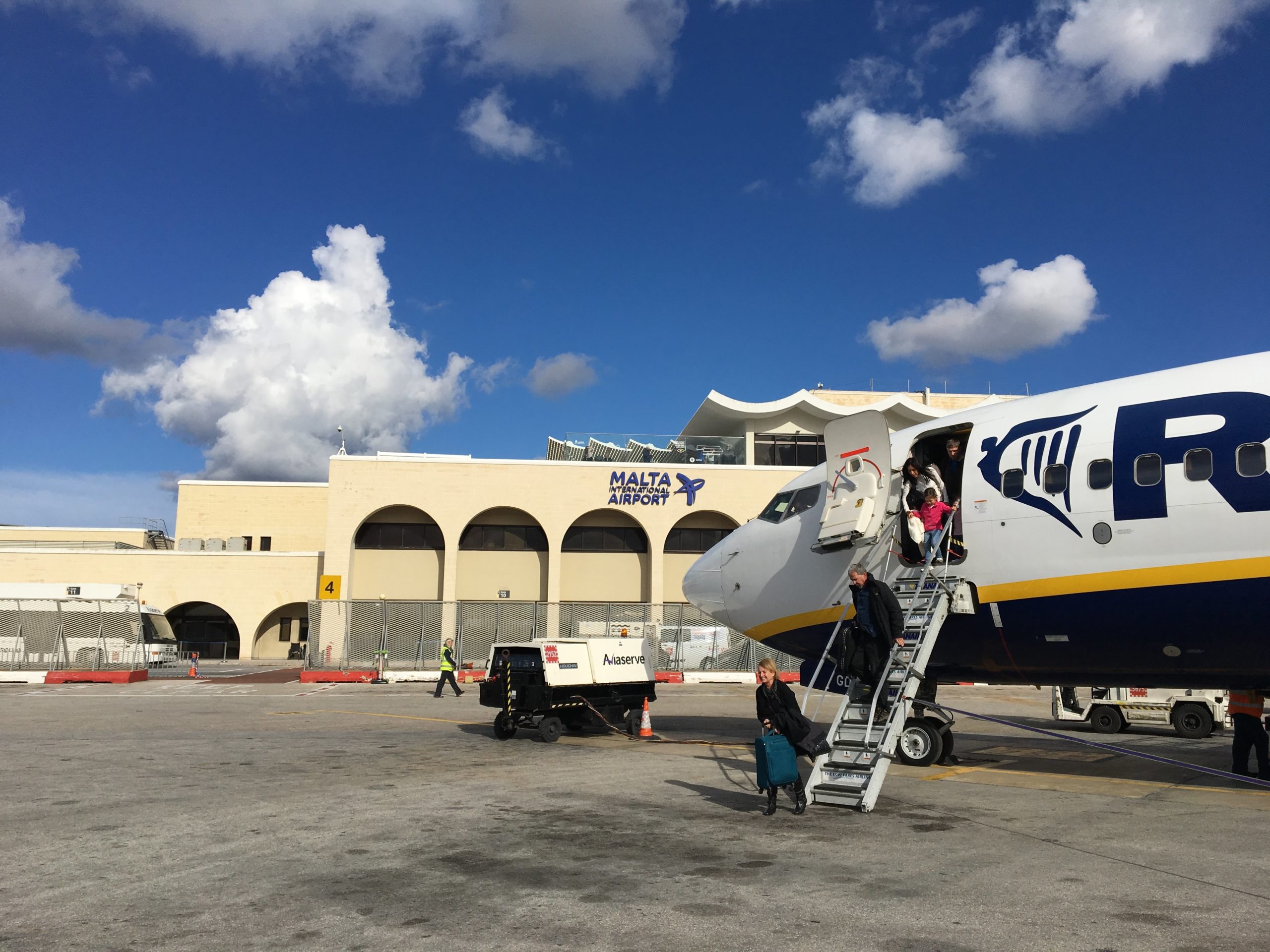
Arrival at Malta Airport.
After landing at the Malta airport and bursting out of the cramped seats, I strode confidently to the car rental lot. I was not deterred by the fact that one drives on the left here, a legacy of its status as a British colony. As the car rental employee handed me the keys, however, he offered a cryptic warning in the form of a question: “Are you sure you want to do this?” I spent a minute or two trying to figure out if he was kidding. He was not.
Before Malta, I had established a clear hierarchy of terrible drivers. At the top of the list is Italy, where there seems to be a certain care-free attitude about driving at ridiculous speeds without regard for other drivers that suggests people don’t really think about whether they might live or die when they get behind the wheel. Second is Boston, where drivers are hyper-aggressive and have invented an entire set of rules known only unto themselves. Then there is France, where drivers become infuriated if you don’t follow the rules while paradoxically insisting that following the rules impinges on their liberty.
None of them compares to the sheer terror of driving in Malta. The people of this country have weaponized their vehicles, making each second on the road feel like a scene from Death Race 2000. From the moment I inserted the key and started the car, I felt someone had painted a giant target on our car. Within a few minutes of pulling out of the airport parking lot, I was convinced that every person on the island was trying to kill me.
Cars hurtled at remarkable speeds, ping-ponging between lanes. Signaling seemed to not exist and driving too slow appeared to be a capital offense as drivers appeared to be surgically attached to their car horns. We had barely gone a mile before my wife was gripping the sides of her seat and we were screaming at each other.
Here is a fun fact I wish I had known in advance: Between 2010 and 2017, car-related fatalities declined in every EU country except Malta. Indeed, car fatalities have increased 18% since 2001. And while Malta’s death rate ranks below the European average, that is also misleading because it is far higher in the urban area where we were driving. That turns out to not be insignificant.
Here is another fun fact that I wish I’d known in advance: Malta is the most densely populated country in the European Union with 3,000 people per square mile compared to 85 per square mile in the United States. It appeared to us that every inch of terrain had been paved with a system of roads designed by a drunken Willy Wonka.
We lost all sense of direction on roads that twist and turn without any obvious reason. At one point we were driving along a modest stretch of two-lane road that did a passable impression of a highway when it suddenly narrowed to a single lane just a few centimeters wider than the car. Squeezed between giant stone walls, we had to retract the side mirrors and hold our breath to ensure we could slip through.
Google Maps seemed to rely on data that hasn’t been updated since 1959, which caused us to follow a route that promised to take us somewhere only to be confronted with a dead end. There wasn’t an obstruction. It just looked like someone had started building a road and then given up. After two hours of driving to reach our B&B in the village of Naxxar that was only 8 miles from the airport, we had run out of profanity and had to invent new ways of communicating our stratospheric levels of stress.
When I say village, I know that there is indeed such a place that distinguishes itself geographically as Naxxar. But during the drive, there had been nothing to distinguish one place from the next. To our eyes, there was just one unending development, with towns bleeding into one another. Road signs seemed to indicate that, yes, we had arrived in Naxxar, but where it began and ended, I could not say.
Unfortunately, the delay in arriving meant we had finally reached the town at an awkward moment which fell well after cafes had closed for the afternoon but too soon for an evening meal. We were starving and so we parked and began to wander in search of something that resembled a town center where a bakery might still be open. Naturally, it had started to rain, and so we trudged in circles for almost an hour before finally finding a small shop selling greasy meat pastries. Sitting on a bench, eating sullenly, we watched cars whiz by at breakneck speeds while taking stock of my growing pile of regrets and my wife’s resentful gaze.
Chapel 5 Suitespop
Finding our B&B proved to be another adventure. Parking turns out to be theoretical. Driving into Naxxar’s narrow, Medieval streets provided another mind-bending experience. It took 30 minutes to find a parking spot that we were only somewhat sure was legal. But by then, I felt willing to pay whatever parking fine might come just to be away from the car for several hours.
Our luck began to change as soon as we arrived at our B&B, Chapel 5 Suites. Run by a delightful British couple, Malcom and Alex, the inn offered a mix of elaborately decorated rooms that run on the smaller side but are warm and welcoming. We stayed in the “Violet” room upstairs, which featured a canopy bed and sofa of the same color. A spiral staircase led to a rooftop patio.
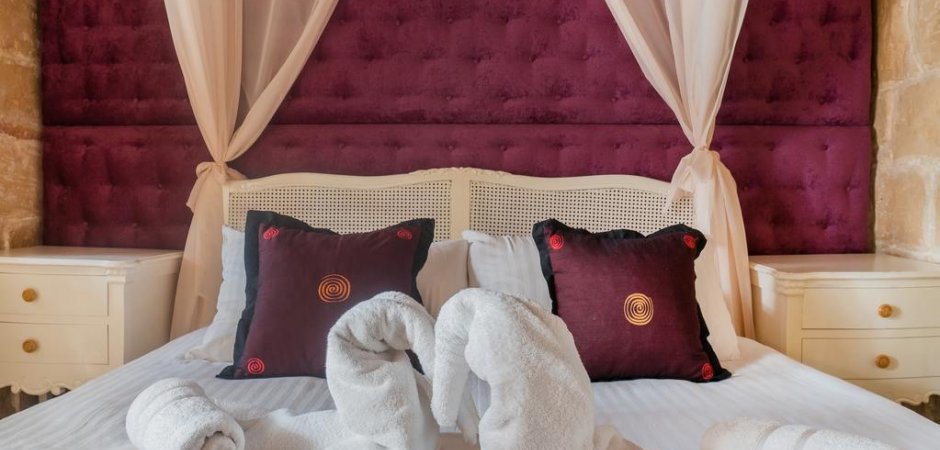
The Violet room at the Chapel 5 Suites in Naxxar.
After settling in a bit, we went downstairs where Alex seemed to recognize the sensation of horror that lurked behind our eyes. “We are in hell,” our faces indicated. “How do we get out?” We recounted our tale of woe, and after the confessional, she offered some much-needed guidance that would turn things around.
The Other Malta
Our second day on Malta proved more enjoyable, although we made another fundamental mistake by overcompensating for our lost first day. As such, we packed our itinerary which created that hurry-up-and-relax sensation.
Thanks to Alex’s orientation session, we learned that Malta is not, in fact, a concrete wasteland. We were staying on the main Southern island, which is oval shaped and extends about 33 miles. So far, we had mostly driven along the eastern part. But in recommending a place for hiking, Alex counseled us to head west from Naxxar. Indeed, not far outside of town we began to see patches of green and fewer roads which combined to lighten our mood.
Within 20 minutes, we could see the hilltop fortress city of Mdina where we made a quick stop. As we wandered the walled city that was once the capital, we began to get a sense of the long and twisted history of this island nation. Thanks to its strategic location in the middle of the Medditaranean, Malta has been overrun by just about every colonial power one can imagine. Mdina is believed to have been founded by the Phoenicians in the 8th century B.C.
Its limestone walls have been built and re-built as it passed from the Roman Empire to the Byzantine Empire to Muslim occupants to a Catholic regime to the French and then the British. Basically, Malta has been history’s punching bag and its tangle of cultures and place-names shows the rich diversity of this legacy.
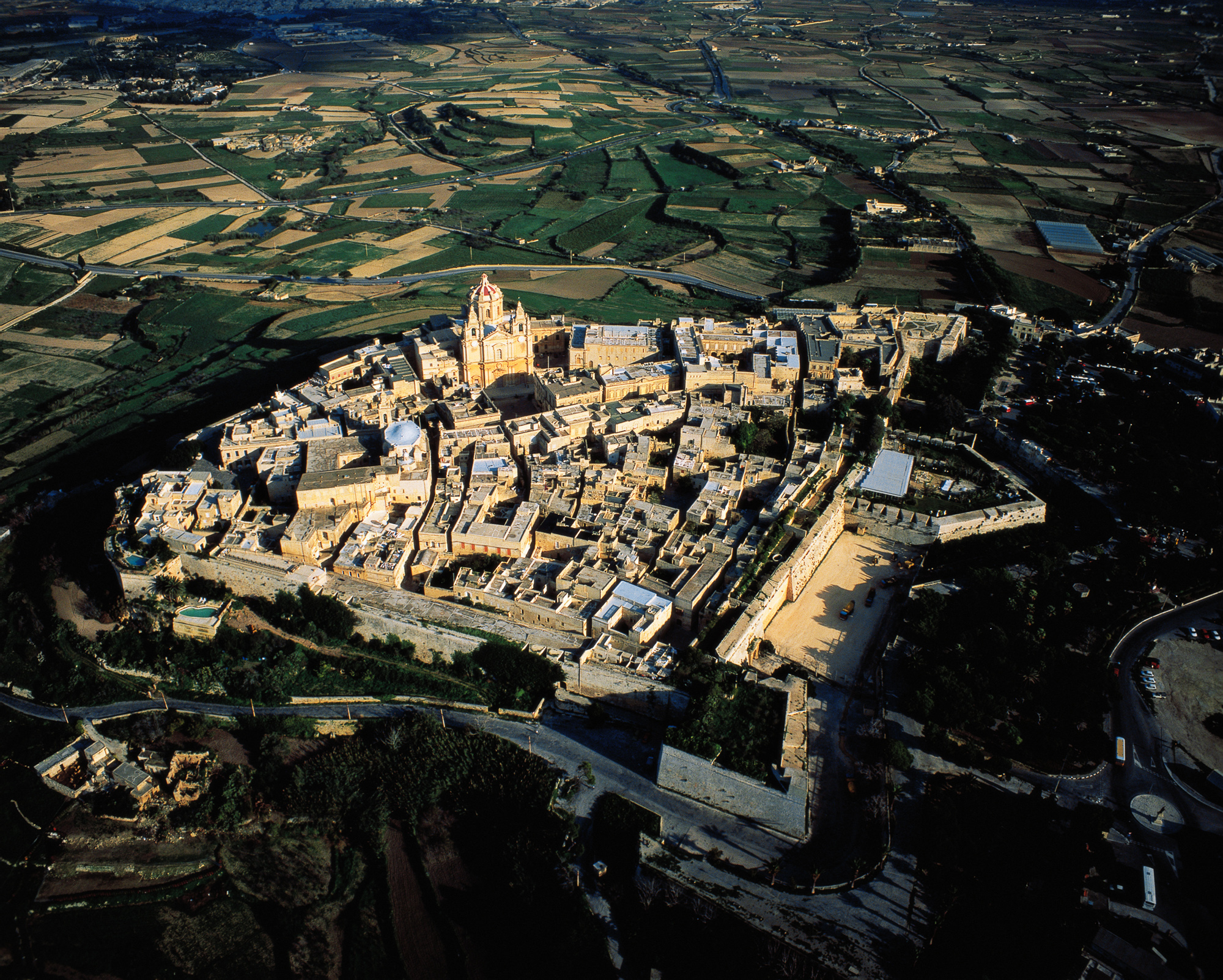
The fortified city of Mdina. Photo courtesy of viewingmalta.com
Perhaps this was best captured by our next pit stop a few more miles down the road. We pulled over to get some food for a picnic, and parked next to St. Mary’s, a Catholic Church that displayed elements of Baroque and Byzantine architecture and sat on Għar Bittija road in the town Ħad-Dingli.
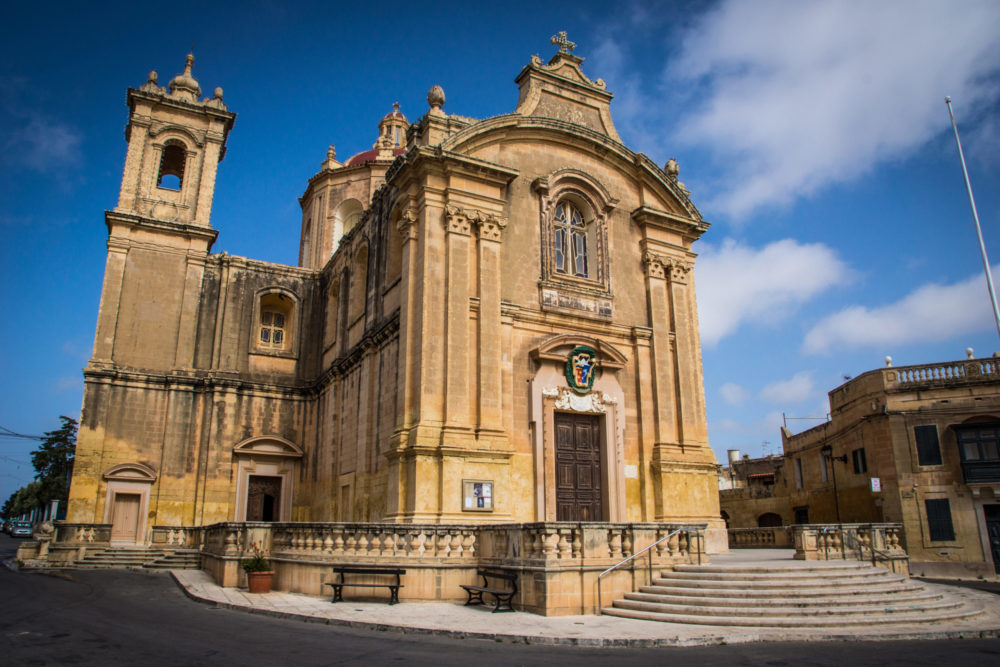
St. Mary Parish Church in Qrendi. Photo courtesy of viewingmalta.com
Sandwiches in hand, we drove another 15 minutes and reached the coast and the cliffs of Dingli, which had a faint Irish sound to my ears. We parked in front of the Saint Mary Magdalene Chapel, a simple stone structure that is nicknamed the “chapel of the cliffs.”
From there, we walked south for about an hour along a path that rewarded us with views of the cliffs that dropped straight into the Mediterranean. We had been on Malta for almost 24 hours, though it felt like 72. But now, at last, we were getting glimpses of the verdant island that we had imagined when first booking this trip months earlier.
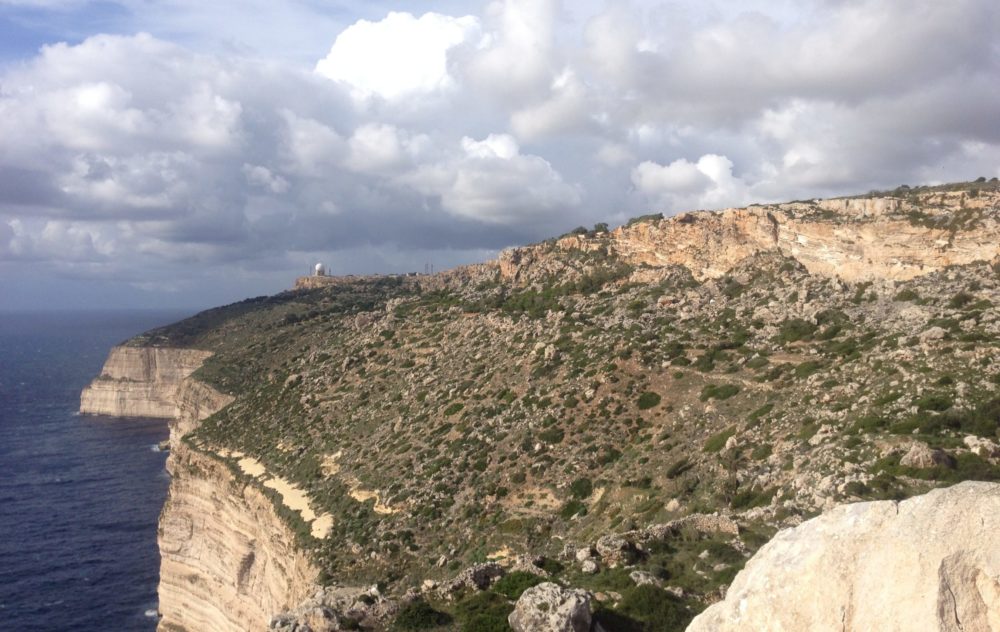
Dingli Cliffs
Alas, the itinerary called to us. On our to-do list was finding a spa, and Alex had suggested the Corinthia Palace. Back in our car, we drove east, eventually leaving behind the minimalist country highways for the kamikaze tumult of Malta’s urban environs.
Having survived several near-misses with the nation’s suicidal drivers, we managed to park and enter the luxury hotel and navigate the various Greek-influenced columns and statues to find the spa. An hour rotating between the steam room, jacuzzis, and pools felt well-earned by this point. Post-pampering, we emerged ready to tackle our final destination for the day.
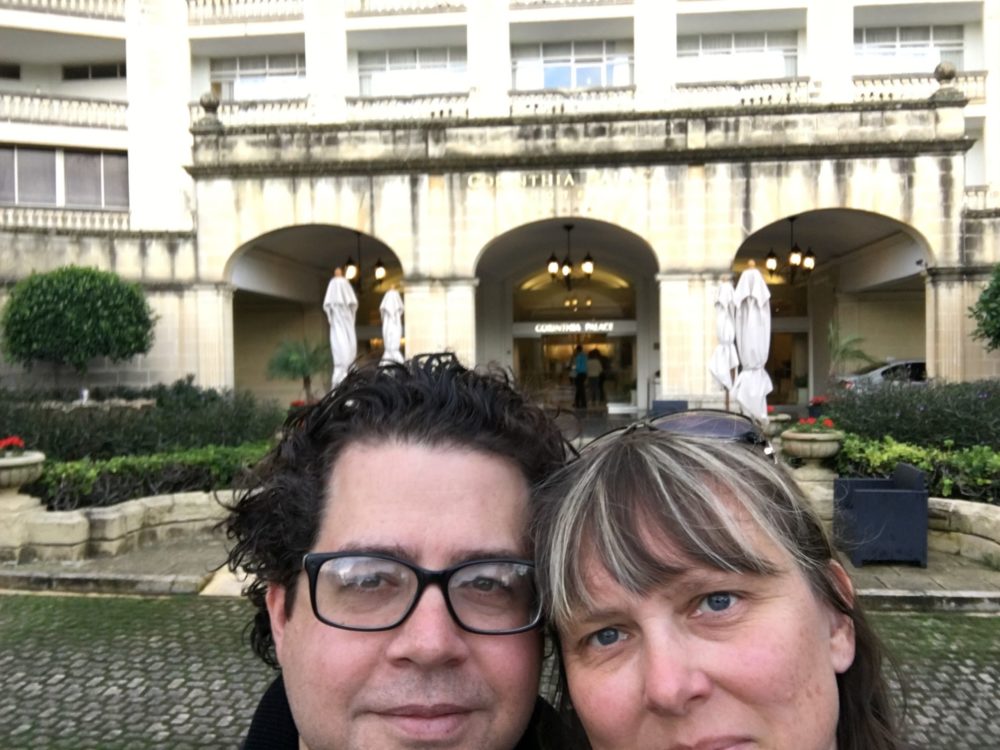
Moderately relaxed after a visit to the spa.
Visiting Valletta
The nation’s modern capital sits on a peninsula that pokes out from the eastern edge of the island. The surrounding landscape across the water is busy with soaring luxury apartment buildings and ports full of yachts. On one side of the walled city, a massive cruise ship filled the water and the sky. But once inside Valletta, we walked through a city that could hold its own against any of Europe’s most romantic capitals.
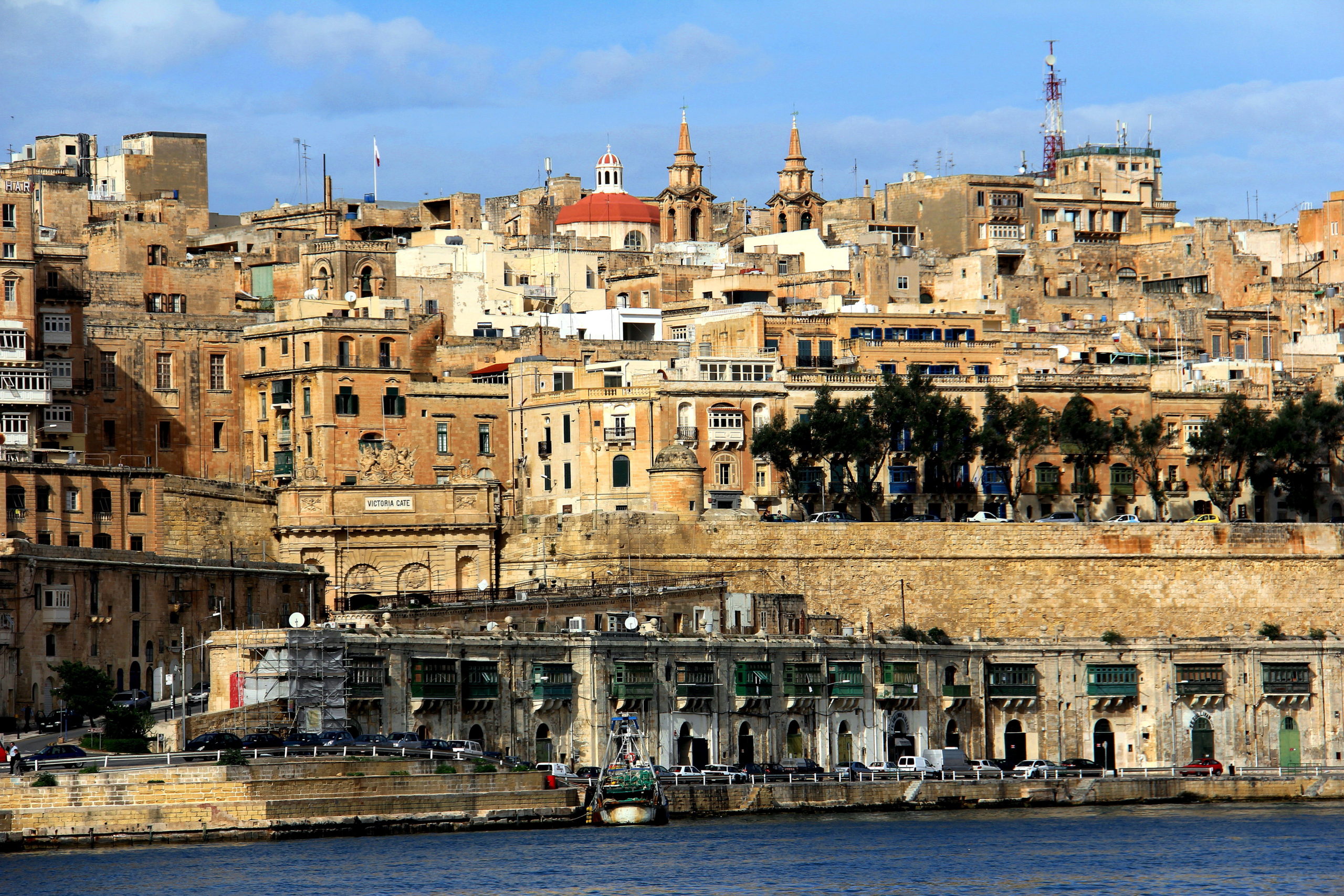
Outside walls of Valletta. Photo courtesy of viewingmalta.com
Valletta was founded in the 16th century by the Knights of St. John, a Catholic sect that once ruled the nation. We walked around the ramparts for about 45 minutes, enjoying the views out to the sea as well as those inwards to the city’s hilly streets.
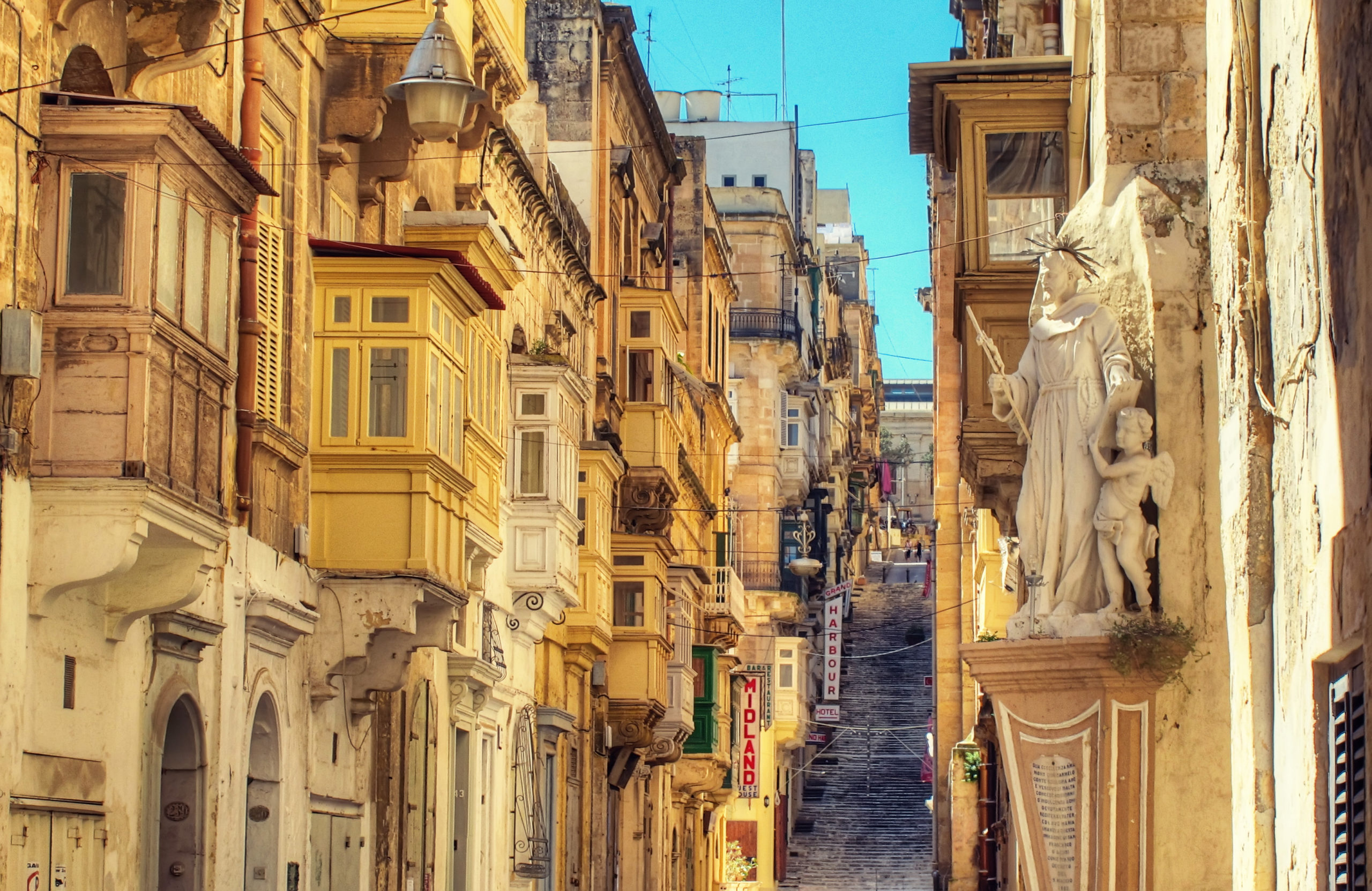
Battery Street, Valletta. Photo courtesy of viewingmalta.com
With darkness falling, we sat for a drink at a plaza in front of the baroque St. John’s church, just in time for happy hour. Though our notion of what 2-for-1 meant turned out to be different than that of our Maltese server. We each ordered a drink, thinking we would have to pay for one. Instead, the server brought 4 enormous cocktails, a 2-for-1 special for each of us. About halfway through the first, we were already feeling the effects of the generous ration of alcohol and made the painful but prudent decision to abandon the rest and move on to dinner.

Two-for-one became four-for-two.
We had a reservation at Dimitri’s, a highly rated bistro that offers an intimate setting. The marble-top tables were close together, just a few to each room. We sat across the open kitchen and ordered a couple of glasses of wine. The meal that followed included the rabbit with garlic for me and the pasta with chorizo and broccoli for Jen. Both were outstanding and gave us a satisfying and relaxing ending to our whirlwind second day.
Go to Gozo
The other piece of advice that someone dropped before our trip, and which I tuned out, was that we should just head to Malta’s northern island of Gozo after landing. On the third day, we finally did that. This advice turns out the best I can offer if you go to Malta: Get out and go to Gozo.
From our B&B, we drove north early on Saturday morning toward the ferry terminal. Along the way, we passed additional evidence of the strangeness of Malta: Popeye’s Village. Those of a certain age will remember the curiously bizarre 1980 musical film Popeye starring Robin Williams and Shelly Duvall. Director Robert Altman built not just some sets, but the entire village of Sweetwater for the film.
The film was a modest success that came and went, but the village remains. Today, one can pay €16 to wander the streets and mingle with actors playing the villagers, including Popeye and Olive Oyl. Perhaps even more improbably, Popeye Village is available for wedding bookings where one can fulfill a dream of getting married in a cartoon dreamland that no doubt features champagne and lots of spinach. Alas, this discovery came about two decades too late for us.
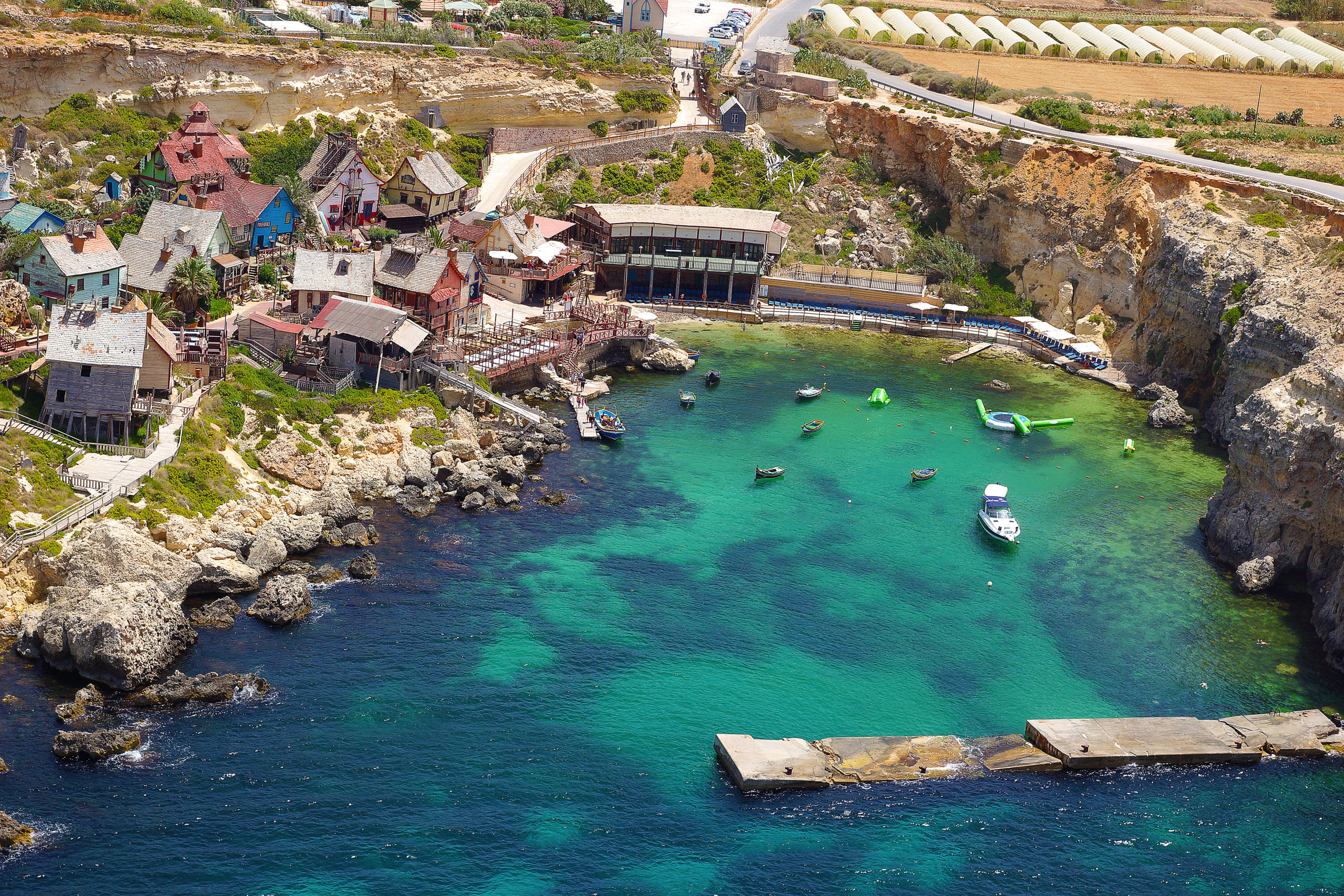
Popeye’s Village. Photo courtesy viewingmalta.com
We skipped Popeye’s Village.
The 30-minute ferry ride brought us to the port on the southeast corner of Gozo. Upon driving off the ferry, the first site we encountered was two young boys riding a small wagon pulled by a donkey. We had come to the right place.
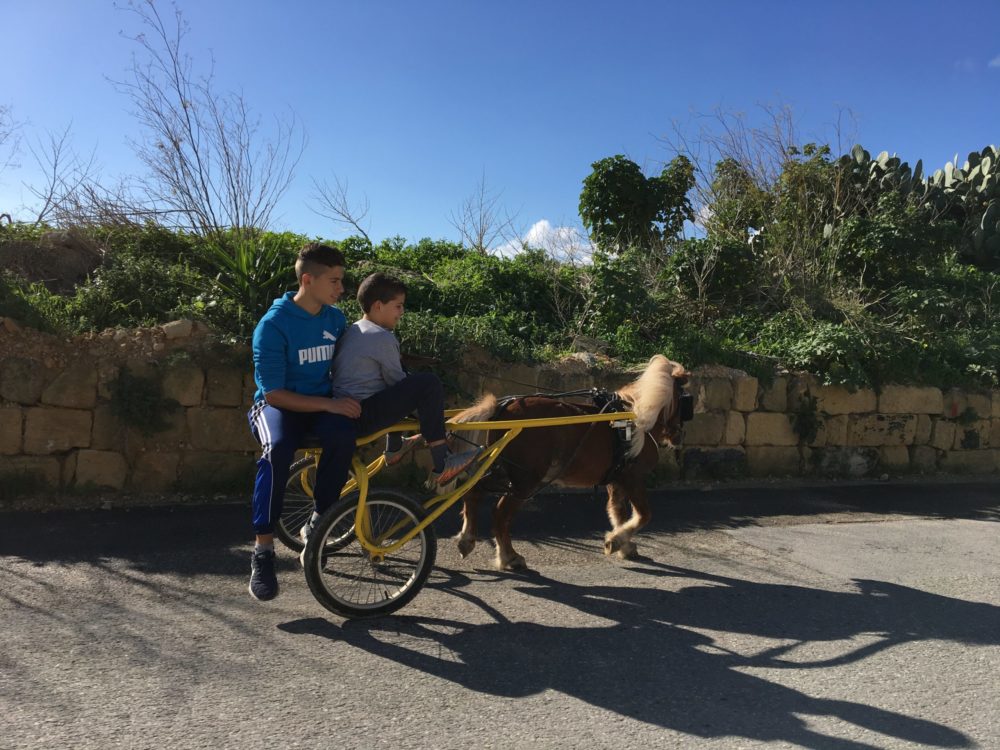
On Gozo, at last.
Driving west, we skirted along seaside views while only rarely passing another vehicle. The roads were few, and therefore logical and easy to follow. We arrived in the town of Xlendi where we parked and set out on a hike that began from the turquoise waters of the bay.
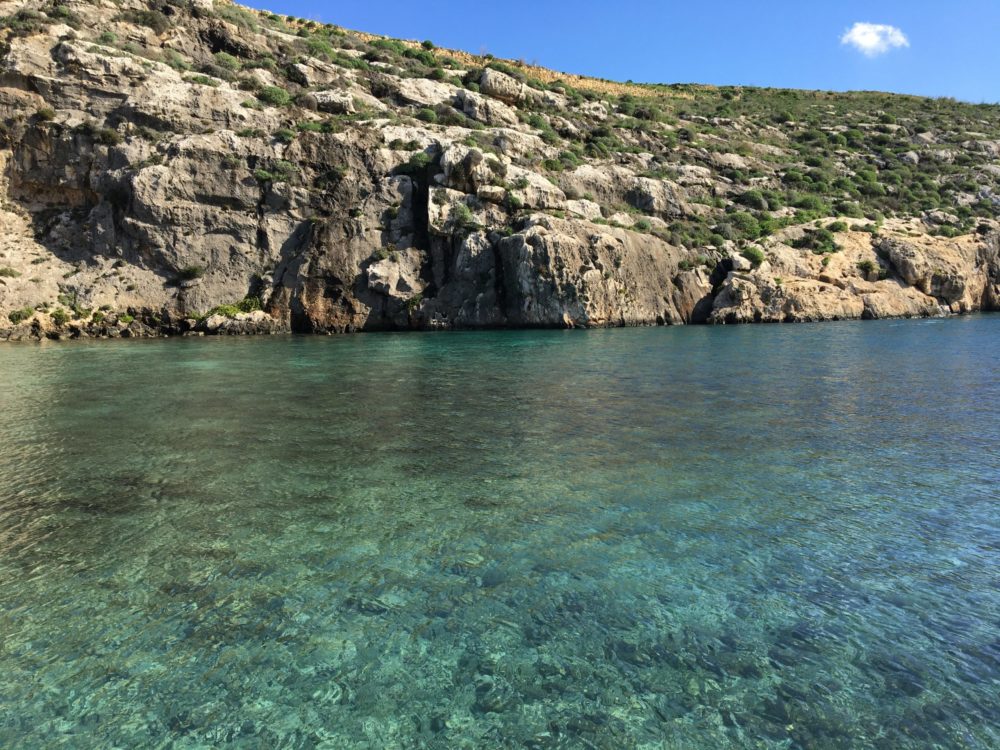
Xlendi Bay, Malta
An easy path ascended lightly and within 20 minutes we were walking along a ridge with panoramic views. An hour hiking toward the southeast brought us to the Sanap Cliffs Sunset. Rising almost 400 feet above the sea, this corner is a popular choice for watching what its name suggests. We arrived near noon, but the views were still magnificent, so blinding with beauty that our hearts were beginning to find room to forgive Malta. At last, winds of chance were blowing our way at a pace we could truly stop and savor.
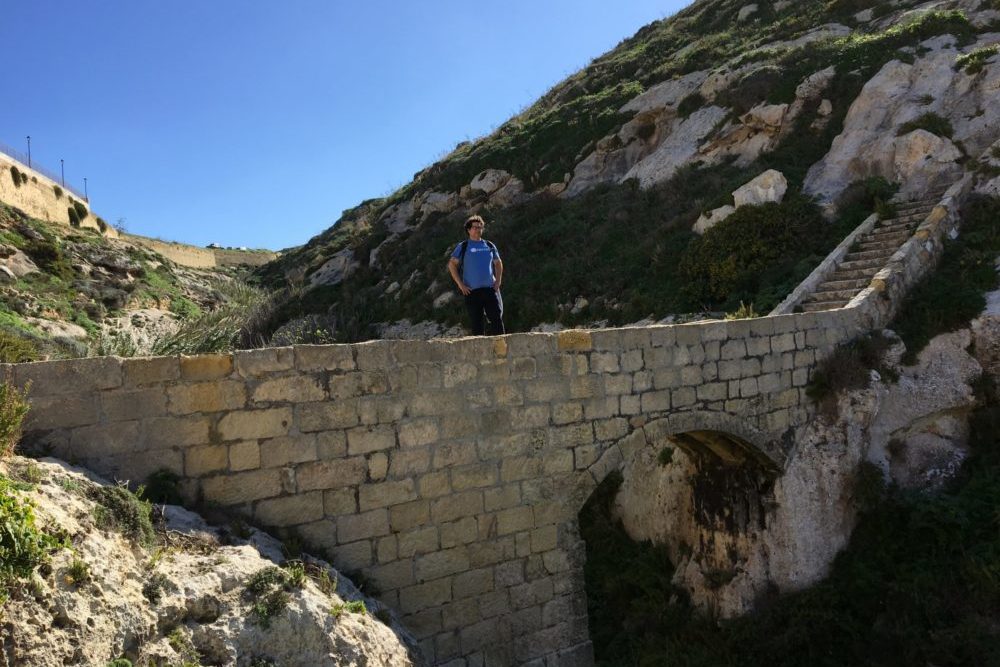
Walking up from Xlendi Bay on Gozo.
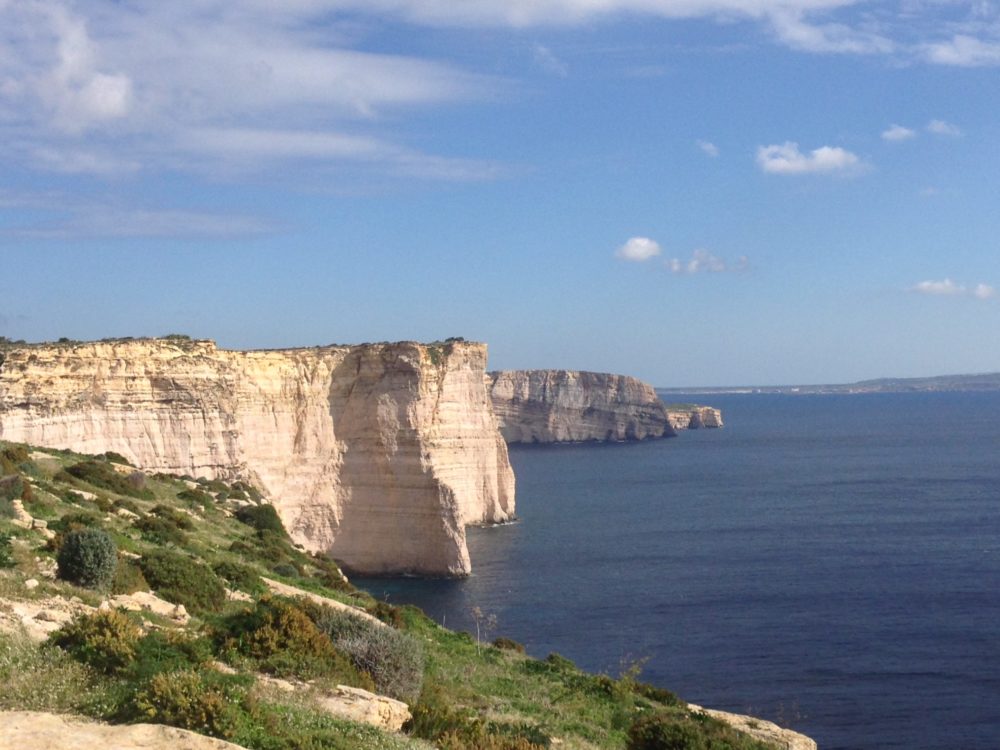
Sanap Cliffs Sunset
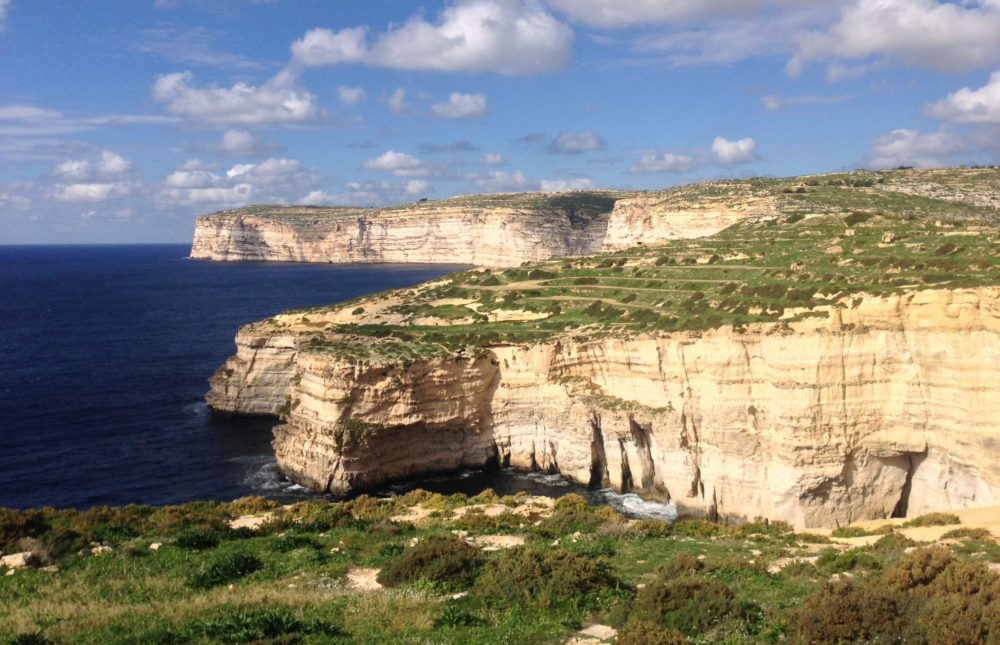
Sanap Cliffs Sunset
We followed a circular path back to our car in Xlendi and then proceeded to drive along the western part of Gozo, enjoying the emptiness and peaceful landscapes. Gozo’s main city of Victoria offered no temptation. Instead, an hour car ride was sufficient to arrive at the north edge of the island.
After parking, we set out walking along the shore and arrived at Gozo’s Salt Pans. These rows of squares look like a chessboard sitting just on the edge of the sea. They date back to the 18th century and are still used today. When the waves crash over the squares, or pans, some water remains, and the salt eventually settles to the bottoms. Locals periodically scrape up that salt and then take it to nearby caves to process it.
It’s fascinating to think that someone almost 350 years ago, on this remote island, concocted such an elegant and ingenious system. And that it has survived all this time, still getting the job done, is no less amazing.
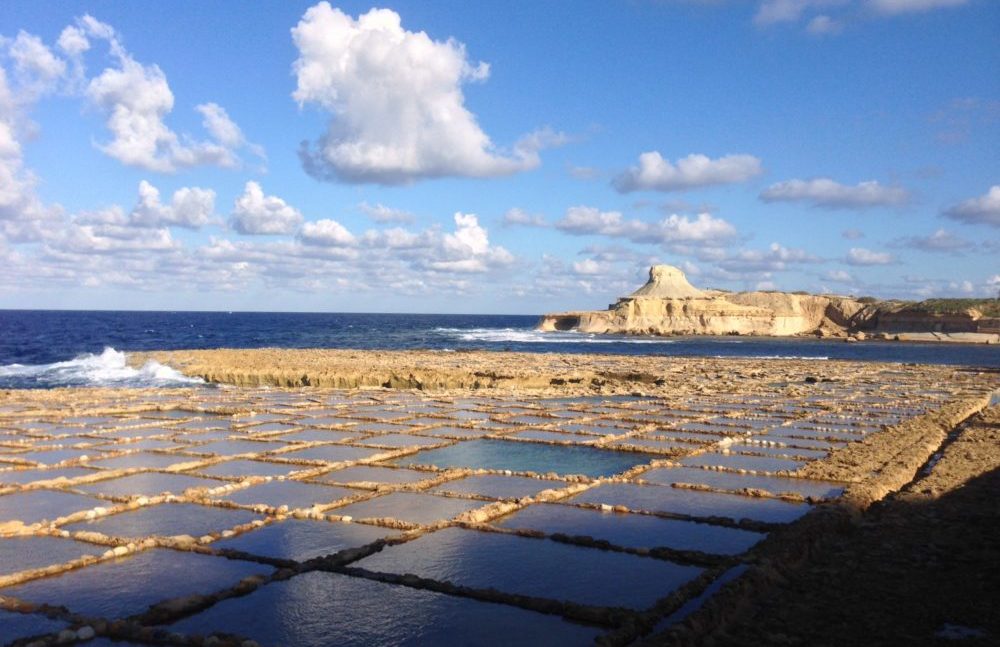
Salts Pans
Our final drive that afternoon brought us back to the ferry terminal, and then Malta and our B&B to prepare for our return home the next day. I can’t say whether we’d seen and experienced the “true” Malta, or the best of what this tiny country has to offer. What I know is that we survived our Maltese encounter, overcome my own idiocy, and even managed to find some pleasure in the madness.
Chris O’Brien is an American journalist living in Toulouse, France. Before moving in 2014, he was based in Silicon Valley for 15 years, he wrote about technology and startups for the San Jose Mercury News and Los Angeles Times. From France, he publishes the twice-weekly newsletter French Crossroads which covers news and travel in France.








